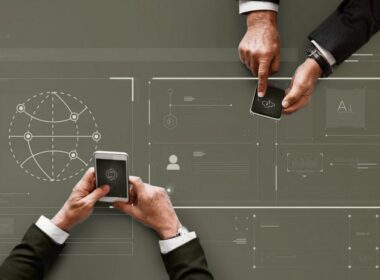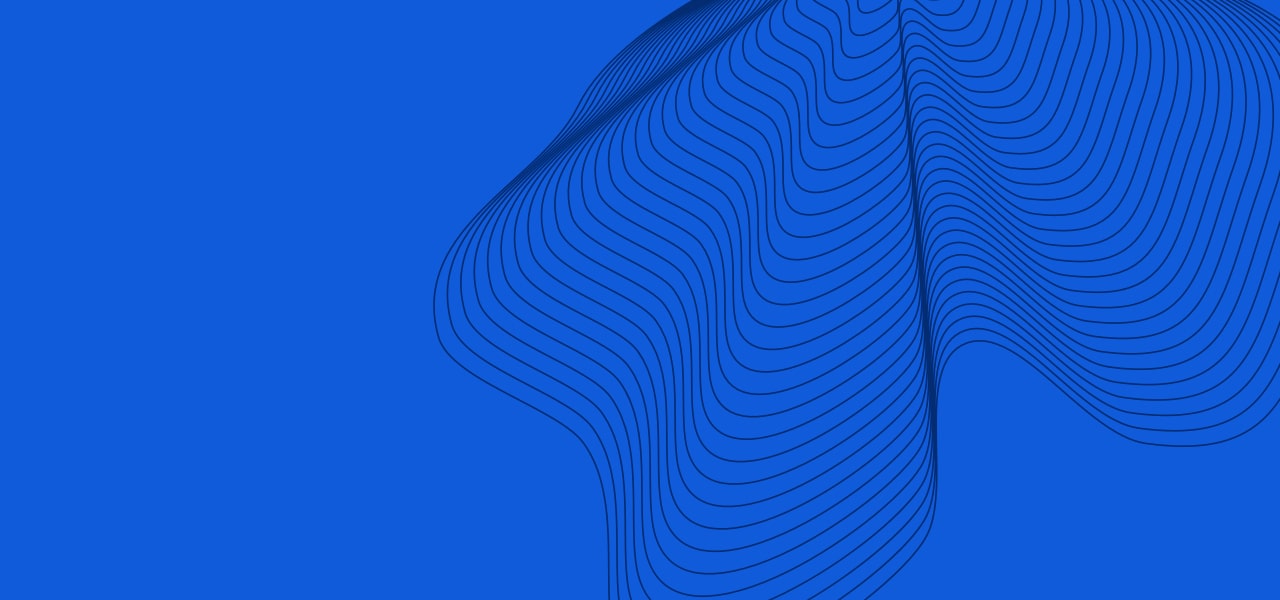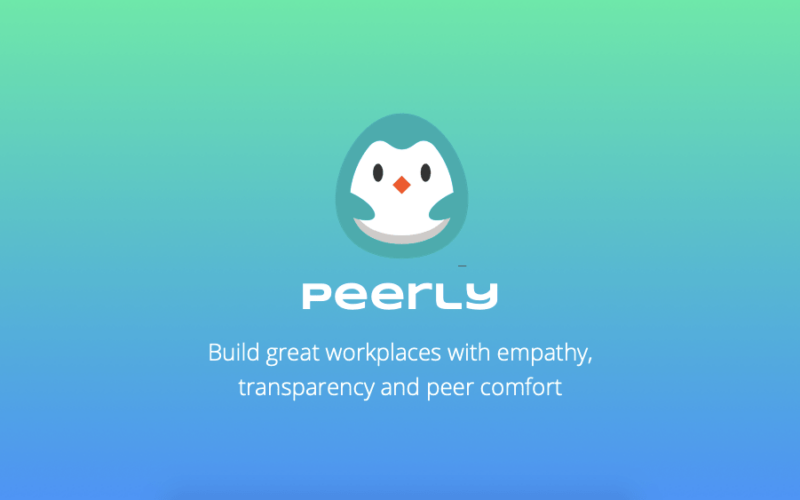Below is an interview of Ms. Vidhya Abhijith, co-founder, Codewave. She opens up on “Design thinking”, integrating “agile & design thinking” to build the right solutions, to maximize value.
“bring the power of human empathy, design thinking to every project” – Vidhya Abhijith

My name is Vidhya and I’m currently heading the design organization at Codewave, setting organization wide UX practices. My role is to bring the power of human empathy, design thinking to every project. It’s about creating an atmosphere of “human centricity and behavior observation” to create meaningful experiences.
I believe digitization efforts are meaningless, if problems we’re solving, are not designed for maximizing human interaction and opportunity for continuous high value exchange. This can only be done best, when designers understand what people need, that a business can give – to meet high moments of demand with the best possible supply.
Makes sense! But how do you achieve this? Please tell us a little more about your day to day activities as a design head, your secret-sauce?
I guide the design team to :
- Suspend all assumptions, judgement or biases on human behaviors based on their own past experiences.
- Step into a “neutral observer” position – making an attempt to understand the thoughts, emotions, expressions, actions of the end user and spot gaps between them.
- Visualize users’ interactions with the customer’s business, impact each interaction has on their emotional states and behaviors
- Study quantitative behavioral data available for the target user segment, compare inferences with qualitative observations
- Design user interactions and moments of high value exchange, for which users are willing to pay a high value for. Map these moments to critical business goals and intents. Basically, design to match moments of high need, with the best possible service.
- Launch prototypes, validate ideas, study impact on users and the business and evolve design iteratively working with users and business, in close feedback loops.
- Make design thinking core culture, integrate this foundationally into every interaction at Codewave, so our interactions with team members, customers, partners and the world are designed for meaningful exchanges and co-creating larger outcomes.
- Maintain an organizational design that allows high flexibility, transparency, collaboration and continuous learning.
- Make design thinking a part of everyone’s role at Codewave, as empathy is a foundational human capability all of us have.
- Ensure “human transformation” remains our high purpose and our core culture – through the work we do, small and big.
- Increases predictability of a product/service being adopted and used, as expected. Higher predictability of business success / ROI.
- Gives businesses a competitive edge, by turning focus to users’ less observed behaviors, subtler motivations & barriers to take action, and design uniquely to maximize interaction opportunity and profit opportunity.
- Makes design an inclusive, collaborative journey/experience – evoking empathy & participative leadership of everyone on the project, leading to larger outcomes and an open culture.
Ah! Quite a few benefits. Are businesses welcoming this with open wide arms? What are the factors inhibiting its adoption rate?
Top 3 assumptions/biases we’ve observed to be limiting the opportunity/potential for design thinking and investing time/money/energy in it:
- Someone has already solved it well, many have attempted. How are we likely to observe people differently from our competitors? How are we likely to look at our own business differently than before?
- Going fast is better than going in the right direction. Can I defer my spend on paying attention to people, when it’s a pressing need or blocking all paths to move forward? How urgent is design thinking for my business?
- Design means aesthetic value. It’s nice to have a modern look and feel to our product. Everything needs modernization once in a while.
What are some of the weirdest misconception about “Design Thinking”?
- Design thinking is the hottest buzzword. I need it.
- Design thinking is about fighting / lobbying for users’ best interests.
- Not sure how “design thinking” will change the way we run our business – our department heads have their own thing in their mind, these are people who are not so open to change.
Where and why do you think businesses fail at doing design thinking the right way? What mistakes they tend to make?
- Businesses and designers think design thinking can be skipped by using pre-designed templates/themes available online Design thinking deliverables are not something that can be purchased like in $20 online.
- It takes dedicated efforts to observe subjects (business owners, end users), empathize, understand behaviors and capture inferences on what interactions can be designed for maximum positive impact for everyone.
- The whole process of designing and developing, happens with an experimental mindset – seeking validation of ideas, and working in close feedback loops with end users on what’s really needed, with business owners on how needs can be fulfilled better. More than a one-time effort, this is a continuous process of growth – advancing our human collective intelligence.
- Businesses assume design thinking is a new ‘process’ of creating modern, cool products. Design thinking is an approach that nudges you to run your business as if it’s one large social experiment, always in a state of flux and constant evolution. It’s about continuously listening, learning and evolving your products/services to create moments of high value exchange.
- There’s no plan A or plan B – it’s iterative, experimental evolution with rapid prototyping & regular validation of ideas and assumptions. It’s a way of life, that can lead us to create a more inclusive society at large scale. What I do? We’re actively conducting talks and workshops, to raise awareness on this subject, encouraging businesses to integrate design thinking into everyone’s role – to tap the power of everyone’s creativity, common sense and empathy.
- Designers underestimate their ability to remain open always, to listen to what challenges their beliefs, clearly differentiate between an assumption and an observation. Tendency to be clouded by our own judgements and to try hard to prove a point – defeats the whole purpose. Disruptive ideas are often buried in casually noted observations at random moments, comments coming in informally from unexpected directions, at very unlikely moments – and reading between the lines. Staying open, becoming aware of our own blindspots is key.
- What I do? Encouraging a sense of “altruism” & listening to understand people and businesses (“letting go of the urge to prove something”) and maintaining an ego-free atmosphere, open culture. Having a spirit of a social worker helps.
Tell us a bit about integrating agile and design thinking. How do you come up with such cross-breeding concept?
Agile and design thinking both fundamentally encourage a culture of openness and embracing change, eliminating unnecessary chaos in execution of ideas. Design thinking enables your brand to know itself & its users at a uniquely profound level – guiding your business to create engaging, relevant experiences in modern ways.
Agile enables your strategy-execution teams to move as nimbly as possible, while staying open to new possibilities every moment. Agile as a methodology customized to best unleash the potential of your team, can unlock high levels of “agility” [or] in neuroscientific terms, “neuroplasticity” in people – leading to accelerated individual and collective learning.
- Your project’s Agile practices need to ensure “Design thinking” becomes the core culture of the team and all meetings bring profound clarity on the “why” behind each design decision / origins of change of scope.
- Daily standup meetings are generally short (5-10 minutes) – these could start with new information / insight the team gained on user behavior (or) the business capabilities, challenging old assumptions.
- This could be followed by a weekly meeting summarizing scope change / direction change and lessons learnt. On a 10-12 weeks agile project, involving design led development, each week you pick up new information, learn to respond to it and embrace new unknowns.
- Agile is a great vehicle that can enable creation of great outcomes from Design thinking.
We talked about benefits, misconception and so many other things. What about pitfalls? Do you see any pitfalls in Design Thinking?
Most common what I’ve seen is – business/product owners tend to override the decisions we jointly take as a result of our design thinking exercise, as sometimes product managers / marketing managers are under tremendous pressure to convince their investors / stakeholders on key product decisions that can affect KPIs. For example – a product feature that may be a unique differentiator, may not be a high priority from a revenue perspective.
To give an example – a mobile app for senior citizens going on a long trip on-road is highly valuable when it indicates loo breaks and suggests pitstops. This feature may not yield revenue directly but is extremely valuable for the user. What I do? Try balancing what the user needs with what the business intends, without one overpowering the other. Ensure the products and services we design, always illustrate a healthy, mutual exchange of value, demonstrating a relationship of equals between the business & the customer – through every interaction.
Who all needs to be part of this process?Should founders and top leaders be actively participating in Design Thinking?
Design thinking has the power to question the very existence of a business and enable the business to operate from a quantum state of considering infinite possibilities, looking into the future. Therefore having founders, visionary leaders, senior directors and strategic thinkers are critical to have directional alignment throughout the project, inspiring and energizing all downstream activities.
What I do? Every 4 weeks, we request founders to participate in a project all-hands meeting where we jointly reflect on new observations, user insights/feedback, learnings and directions.
One tip for Project Managers integrating Design Thinking into their agile project journeys
Ensure your project team, has an “organizational design” that embraces Design thinking as it’s core culture. Transparency & empathy become key behaviors critical to the execution of your project. It’s not enough to nail the initial 1 or 2 sprints, but maintaining this ethos through months and moments of adversity, will define the overall project success.
Traditional “Project management” skills may fall short. Human transformational leadership – becomes an obvious need. Be prepared for shattering lows & collapses on the journey, as binding everyone together to create outcomes larger than yourself, consistently becomes harder as you go. But the farther you go, greater your impact on society and transformative potential.
How do you build the right culture for design thinking?
I believe I’ve partly answered this in my earlier answers. When my partner & I founded Codewave, we just had this zeal to elevate human consciousness, through work. Foundationally, we both believed in promoting altruism, humility, empathy through work. From that state of being – we envisioned and designed an organization, that celebrates authenticity & influence of individuals, as individual awakening is critical to achieve what we’re asking people to do. Which is be transparent, empathetic to everyone alike. Pay attention to life, grow at every moment of opportunity, not just once a year for a pay upgrade.
Not everyone thrives in such environments designed to elevate humanity. We’re very careful in getting onboard conscious individuals & teams who understand why we’re doing what we’re doing and love the spirit of human transformation – inside and outside. There are also team members who initially are aligned well with our mission, later on the journey get disconnected / lose alignment at a fundamental level.
We’ve sometimes let go of team members and customers, who’ve challenged our core values or culture, and are extremely confident that the people we’re working with now are leading us in the right direction for continuous growth and innovation. While business happens as an outcome, what makes us show up everyday, is the fact that we’re focused on self-transformation initiating larger transformation, and creating a more inclusive society, a more conscious race in the process.
How can you scale design thinking?
We’re trying to expand our design arm and to be able to scale/replicate a set of design practices, is going to need tools and techniques, to simplify design thinking and ensure everyone on the team is performing activities in alignment with the practices at expected profoundness levels. What I do? I always carry printouts of empathy maps, user journey mapping tools & templates when I visit users along with my team. Help my team take notes, capture behavioral details that we sometimes assume to be unimportant. We’ve created a framework that takes everyone through a “thought-feel-action” observation journey that changes them too. Design thinking changes the observer too as much as it impacts the observed.
Design thinking & UX habits can be easily integrated into your organization at any stage and scaled to any level – provided your organization has established sustainable, friendly agile practices, embraced by everyone alike. Traditional, rigid approaches may not work – as agility is a pre-requisite for Design thinking to influence/create outcomes consistently.
How do you keep design thinking from becoming too rigid?
Design thinking, I believe can never become rigid on it’s own – as it’s only a guiding force to awaken the common sense in people, nudging people to pay attention to what users need that a business can meet, at all times.
Design thinking encourages you to make reasonable assumptions, take informed decisions and quickly validate ideas than shooting in the dark for years, and realizing what’s built is neither meeting real needs not delivering what the business is capable of offering. If people feel, that “design thinking” ended up becoming a “rule book”, then it’s probably not understood well by everyone on the team. You may need to raise the awareness levels of your team, ensure your team moves nimbly while executing ideas iteratively and learning how to design new experiments.
How can MVPs help a team iterate? And how can a team avoid getting mired in endless feedback loops?How can MVPs help a team iterate? And how can a team avoid getting mired in endless feedback loops?
There’s no one right answer to this question – “How much feedback is enough feedback”. Sometimes it’s overwhelming to gather feedback from end users and business stakeholders – because the list can be endless. What I do? Dive deeper and bring clarity on people’s needs and wants, simply ask – “why you exist”. What is a real user need, we’re failing to understand.
What is a real business intent, we’re failing to deliver. Deeper and more nano level the probing is and the emerging clarity is, more clearer becomes the list of things to focus on. Your team gains the ability and clarity to see what needs to be done now, with high precision and predictability. It’s an act of regular introspection, alignment, clarity gaining and prioritization – that becomes a habit. Sometimes your prioritization may not yield expected outcomes, but you keep learning and improving. Maybe that’s the whole point. We’re here to learn and progress one step at a time, not burn out and breakdown on the way.
What cautionary tales would you share about design thinking in a project environment?
- Don’t suppress voices coming in from unexpected people and moments, remain open throughout the project journey. If you’re unable to, step out and take a break, let others help the project thrive.
- Don’t accept perspectives speaking for just one side – for user’s interests or the business’s interests. Encourage everyone to take the project as an opportunity to be inclusive and altruistic, to create disruptive socio-economic outcomes.
- Don’t be blinded by your own biases, be empathetic while observing your subjects – but be aware of your changing emotional states possibly interfering with your design work. Take this opportunity to become more self-aware.
3 reasons not to go for design thinking
There’s no reason why you should not embrace design thinking. But,
- Don’t go for it, if your team isn’t ready yet. It’s a teamsport and you’ve got to take everyone along. One small bias / assumption can affect decisions and larger outcomes.
- Don’t go for it if your org structure has rigid hierarchies where ideas get shot down more than accepted. Focus on your org design & organizational behaviors first.
- Don’t go for it if “human transformation” isn’t your organization’s true purpose and culture. If it’s just about increasing sales.
Codewave is a design thinking led digital transformation company enabling organisations with playful innovation using AI & ML, IoT & Edge, AR, VR, Cloud, Blockchain, and Data.







